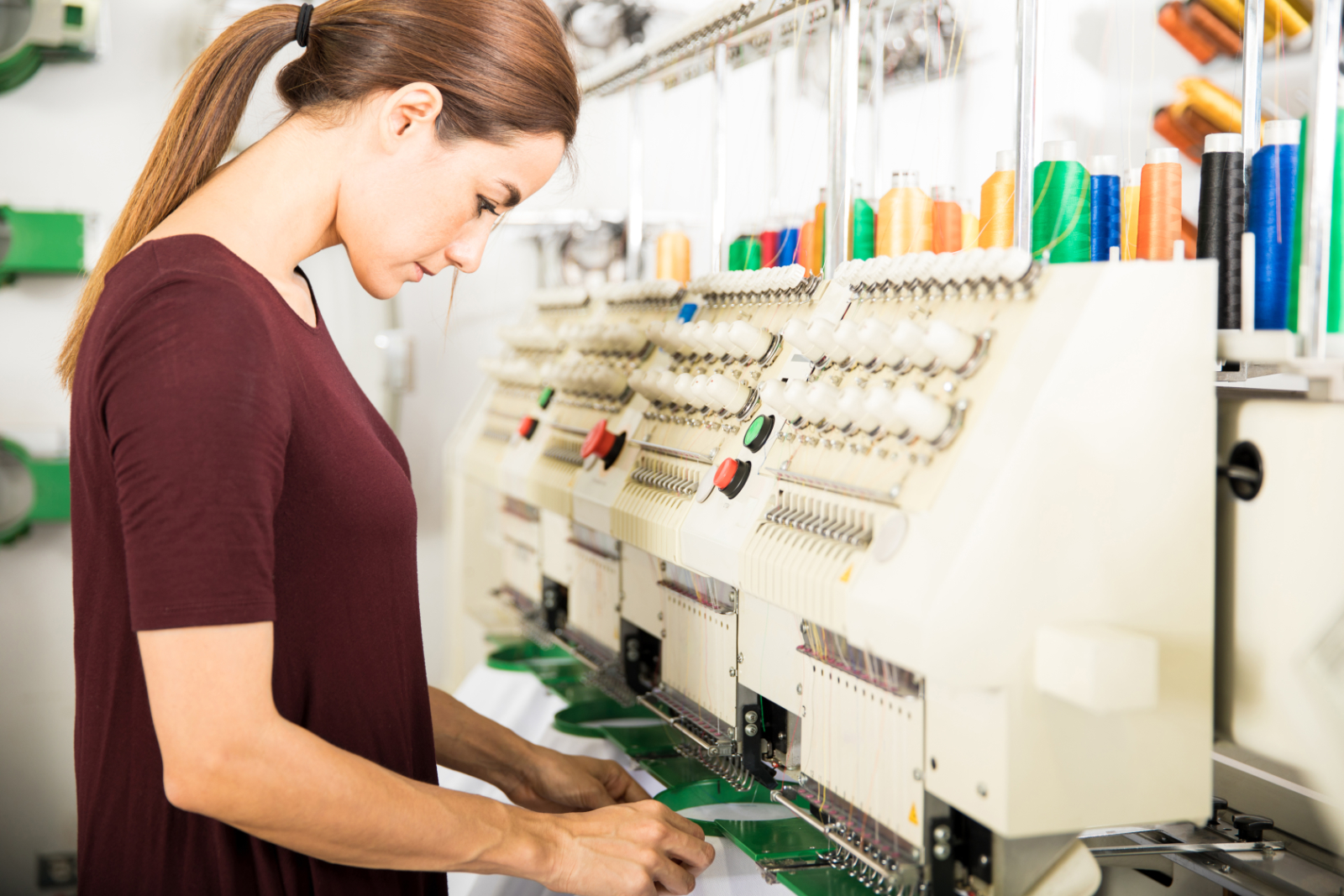There comes a time when every embroiderer hits a snag in their logo or design-making process. Luckily, there’s always a quick and easy fix. Here are five of the most common issues machine embroiderers face and how to solve them.
#1: Your Design Is Puckering
Solution: Use the proper stabilizer for your fabric.
If your design isn’t lying flat, or it’s stretched to the point that it affects the quality of the overall finish, you may need to change the stabilizer you’re using to hold your stitches. Follow this guide for the best stabilizer-to-fabric match:
- Tear-Away Stabilizer: Tear-away is best for embroidery projects that don’t require frequent washing, such as hats and purses, and where the back of the design will not be visible. Fabrics: heavy woven fabrics like denim, canvas, and twill.
- Cut-Away Stabilizer: Great for stretchy fabrics, use cutaway for projects where the back of the design will be seen on the finished product. Fabrics: loose knits, terry cloth, and polyester.
- Water Soluble Stabilizer: Specially suited for delicate materials, a water-soluble stabilizer is formulated to wash away from your embroidery, leaving you with a natural-looking design. Fabrics: sheer fabrics like lace, muslin, and chiffon.
#2: Your Knit Fabric Project Has Noticeable Holes
Solution: Switch to a ball point needle.
When working with knit and other loosely woven fabrics, it’s important to use ball point needles. Ball points work by gently pushing the threads of the fabric aside upon stitching, therefore avoiding large holes. If this is happening to you, chances are your machine may be equipped with a sharp point needle, which pierces through the fibers of the thread, causing the hole.
#3: Your Bobbin Thread Is Showing On Top of Your Embroidery
Solution: Adjust your bobbin or top thread tension.
When your bobbin thread is visible on the top of your design or logo, that means that the needle thread is working at a higher tension. This suggests one of two things:
- Your needle/top thread is too tight
- Your bobbin thread is too loose
Check your machine’s manual to learn how to adjust your bobbin tension, and follow your thread guides accurately. Clean your bobbin case regularly with a lint brush to remove buildup.
#4: Your Hoop Leaves An Indentation On Your Finished Project
Solution: Treat your material or float your project onto your hoop.
“Hoop burn” occurs when the fabric is set too tightly in the hoop and moisture squeezes from the fabric, resulting in a visible imprint of your hoop. T-shirt knits, chenilles, and velvets are especially prone, and it’s best to float them onto your hoop. If you notice hoop burn after completing a project, treat the affected spot with a spray of water or steam to remoisturize the area and lift the imprint.
#5: You Have Gaps Between Areas of Fill Stitches
Solution: Adjust your pull compensation settings.
When you notice that the colors in your fill stitch design are not properly bordering one another, leaving gaps, it may mean that you must make longer stitches to compensate for the pull in your fabric.
Locate your machine’s native file, and adjust the defaults by .1mm at a time until your design registers accurately.
Conclusion
Follow these tips, and you’ll have no trouble creating professional-quality designs guaranteed to satisfy every customer’s needs.
Do you still need help perfecting your digital designs? Check out our blog for more tips on creating beautiful logos with ease.

